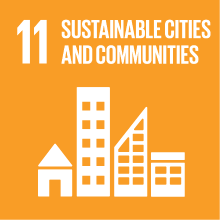CONTEMPORARY ART
- Academic year
- 2022/2023 Syllabus of previous years
- Official course title
- ARTE CONTEMPORANEA
- Course code
- EM3E17 (AF:376393 AR:208580)
- Modality
- On campus classes
- ECTS credits
- 6 out of 12 of MODERN AND CONTEMPORARY ART
- Degree level
- Master's Degree Programme (DM270)
- Educational sector code
- L-ART/03
- Period
- 4th Term
- Course year
- 1
- Moodle
- Go to Moodle page
Contribution of the course to the overall degree programme goals
The aim of the course is to accompany the student to the knowledge and interpretation of digital resources, useful for studying and communicating art historical collections, adopted by the most important museums in the world, and to recognize digital art practices in these contests.
Expected learning outcomes
- ability to apply knowledge and understanding: ability to recognize the different digital expressions of the online collections and to understand the use of specific digital devices adopted by museums for the diverse purpose; to research online collection and to distingue different interfaces and APIs developed by museums;
- ability to understand: capability in analyzing digital reproduction of art in the online and virtual museum; to identify the choices made by institutions; to critically compare the digital solution adopted by museums and cultural institutions in communication and interpretation of digital art collections and digital artworks; to be able to discuss with a property of language and correct formal analysis;
- communication skills: ability to use proper terminology, to comment and communicate the outcome of student's work; to interact with peers and professors in a respectful and effective way;
Pre-requirements
Contents
Through the analysis of single case studies, will be presented specific projects that used the museum space as shift to start participatory practices and deepen the concept of memory, archive and tradition.
The two nodes of the museum - understood both as an archive and as a place for the preservation of art history - and that of artistic creation, are the two polarities that find mutual contamination through the technological element.
Attention will be paid to the forms of representation of online collections highlighting the role of artistic practices and cultural and creative industries in collaborating in the curatorship of museum spaces and the identification of a new digital museography.
Referral texts
Bishop, C., Radical museology. or, what’s ‘Contemporary’ in Museums of Contemporary Art? London Koenig Books, 2013.
Cohen, K., Elkins, J., Aronberg Lavin, M., Macko, N., Schwartz, G., Siegrfied L., S, Stafford, B., Digital Culture and the Practices of Art and Art history, in «Art bulletin», 79, n.2 (1997), pp.187-216.
WINESMITH, K. and ANDERSON, S. (2020): "Digital practices in museums. Where do we go from here?". In The Digital Future of Museums: Conversations and Provocations, by Winesmith, K. and Anderson, S. Routledge 2020.
BEAULIEU, A. and RIJCKE, S. de (2016): "Networked Knowledge and Epistemic Authority in the Development of Virtual Museums". In Museums in a Digital Culture, edited by Akker, C. van den and Leg, S. Amsterdam University Press.
D. England, T. Schiphorst, N. Bryan-Kins (edited by), Curating the Digital. Space for Art and Interaction, Springer, 2016
Frieling, R., The Museum as producer: Processing Art and Performing a Collection, in New Collecting: Exhibiting and Audience after New Media Art, a cura di Graham, B., London, New York, Ashgate, 2014, pp.133-158.
Grasskamp, W., The Book on the Floor: Andre Malraux and the Imaginary Museum, Getty Research Institute, 2016.
Hall, D., The Original and the Reproduction: Art in the Age of Digital Technology, «Visual Resources», 15, No. 2(1999), pp. 269-278.
Huhtamo, E., On the origin of the Virtual Museum, in Museum in a Digital Age, a cura di R. Parry, Leicester, Routledge, 2010.
Assessment methods
The exam will consist of an oral presentation of a project and a 2000 words essay.
The assessment will take counts of participation in class discussions and activities.
Attendance is strongly recommended.
Non-attending students have to contact the teacher and need to prepare an 8000 words critical essay on a specific topic.
Type of exam
Teaching methods
Lectures will be integrated with seminars, workshops, and in-class student presentations and debates.
The didactic material will be made available through the Moodle e-learning platform.
Teaching language
Further information
2030 Agenda for Sustainable Development Goals
This subject deals with topics related to the macro-area "Cities, infrastructure and social capital" and contributes to the achievement of one or more goals of U. N. Agenda for Sustainable Development


